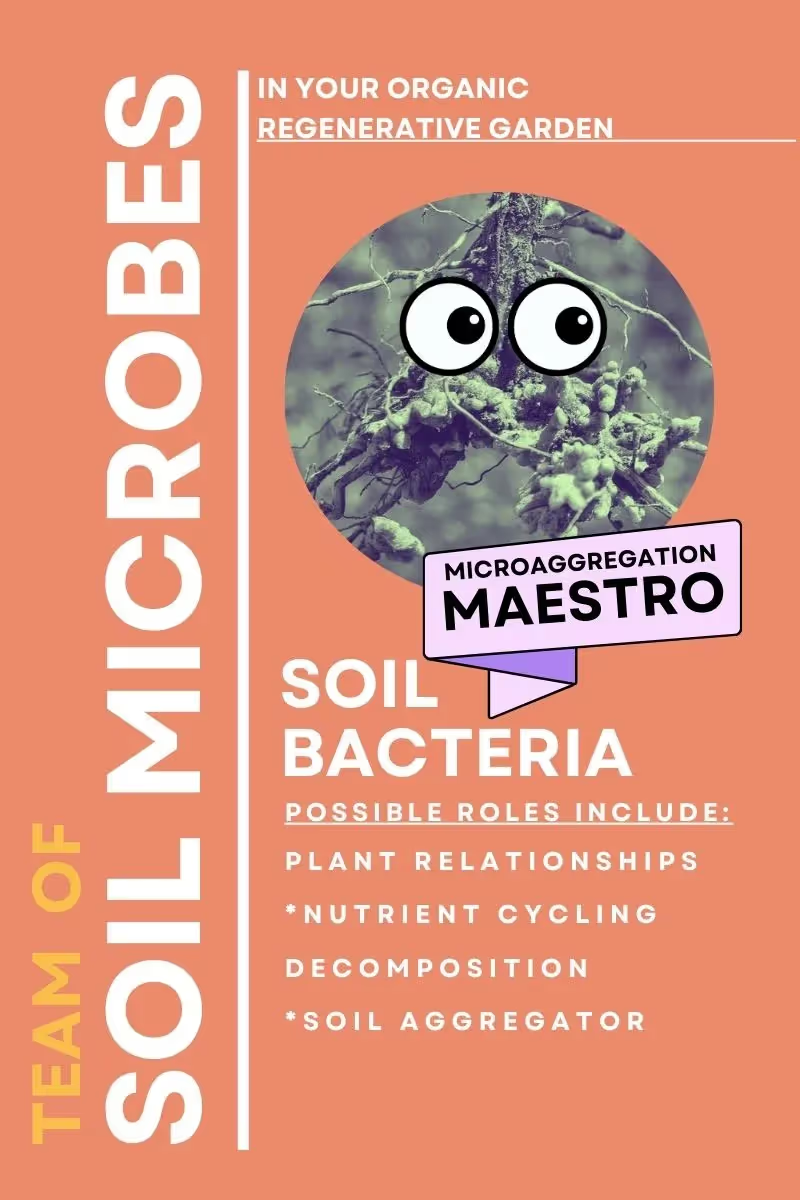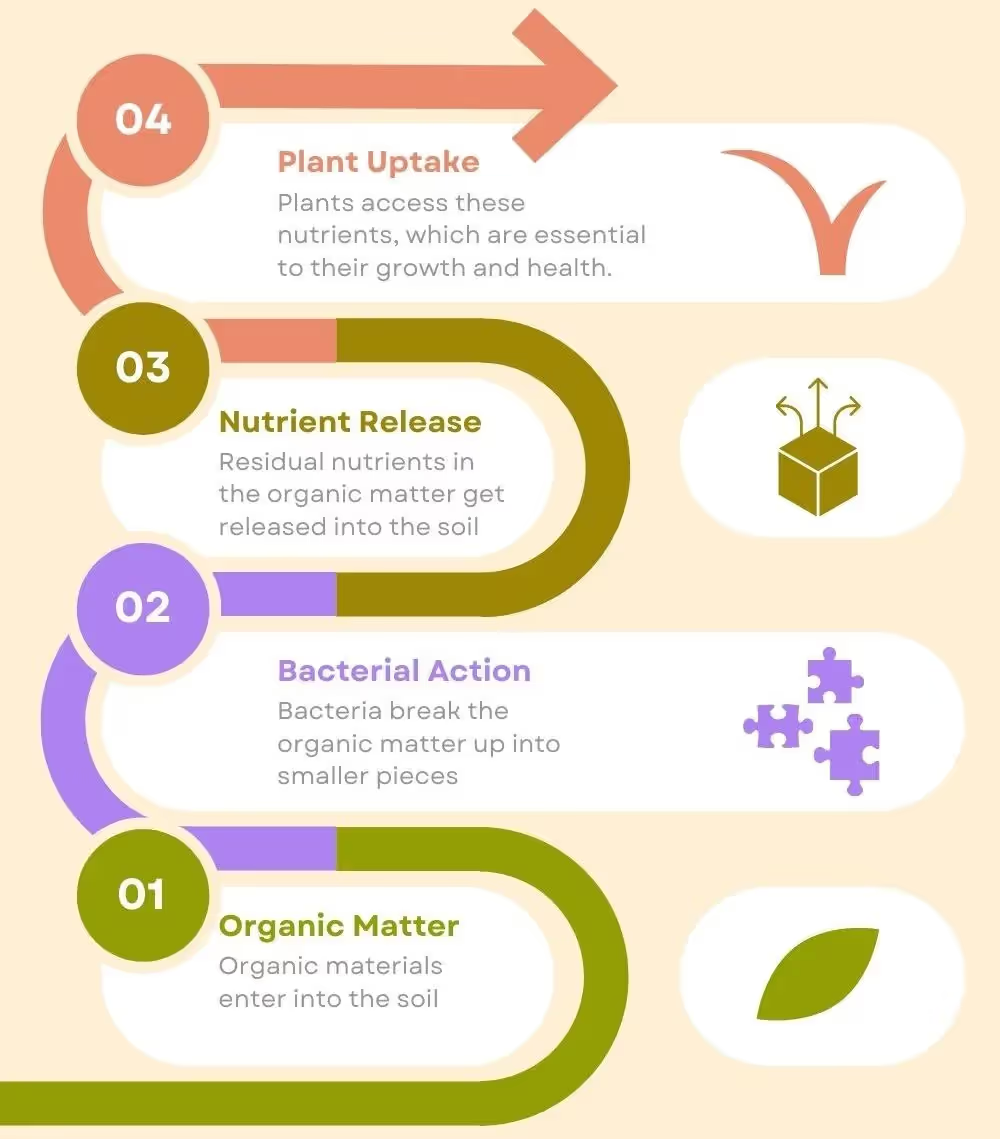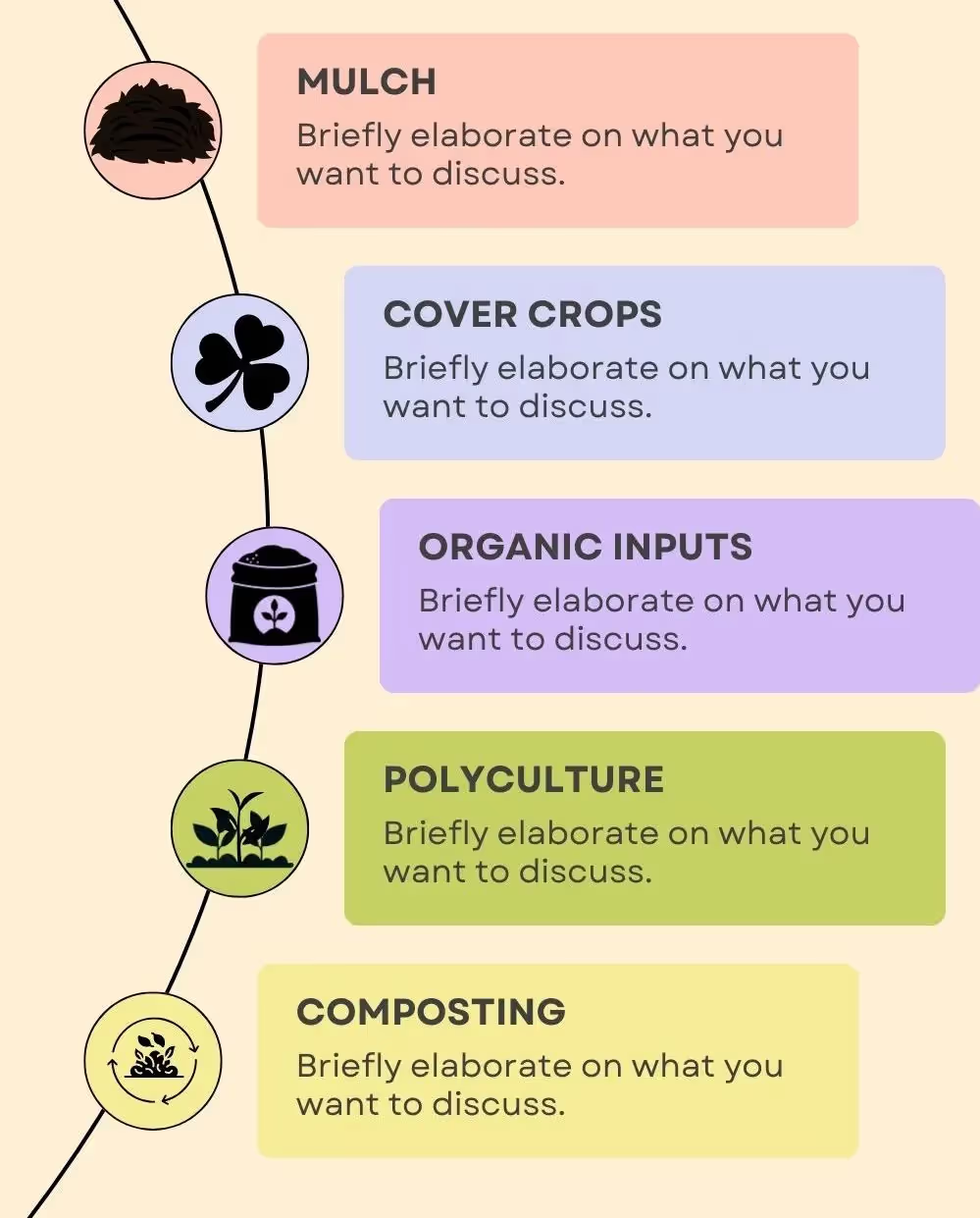
Be a Land Steward.
Sign up for Greenhouse Gases -
a weekly-ish newsletter that will teach you the science behind regenerative gardening, with action steps to help you make a difference in your backyard.

Sign up for Greenhouse Gases -
a weekly-ish newsletter that will teach you the science behind regenerative gardening, with action steps to help you make a difference in your backyard.

Discover the unseen heroes beneath our feet: soil bacteria. These microscopic powerhouses not only enhance garden health but also play a pivotal role in fighting climate change by sequestering carbon.

Soil bacteria are tiny organisms that live in soil all over the world - including our gardens. They all do different jobs to keep the soil healthy. This in turn means that our plants are healthier, too!
They are the most populous demographic among all soil microbes. Additionally, as single-celled organisms, they are the smallest in size among soil microbes.
There’s such a variety of different bacteria, and they each hold unique roles in the soil microbiome (NSW DPI).

Decomposition is the breakdown of organic matter. For example, fallen leaves naturally decompose and are no longer left on the soil surface after a few months.
The decomposition of organic matter is also what turns plant and animal materials into nutrient-rich compost. Bacteria are vital to the beginning states of organic matter breakdown (NSW DPI).
As they break down organic matter into smaller pieces, bacteria facilitate the process of releasing the nutrients stored in the decomposing materials. Now those nutrients are available for plants (soil health).
In fact, bacteria are considered the most important component of decomposition in compost piles (TAMU).
The decomposition process carried out by bacteria:

This relationship is known as symbiotic - a kind of I’ll scratch your back if you scratch mine kind of thing.
An example of this is the bacteria that support legumes in “fixing” nitrogen in the soil. These bacteria essentially turn gaseous nitrogen from the air into a usable form. In other words, they “fix” it for the plants, since the plants can't utilize gaseous nitrogen. Nitrogen is an essential element for plants, as it supports green plant growth (soil quality).
Another way that bacteria support plants with a nitrogen source is through decomposition. As bacteria decompose organic matter, the nitrogen content in these materials is transformed into ammonia, which plants can utilize. Other bacteria change that ammonia into nitrates, which the plants can assimilate easily (Britannica).
Some bacteria make different polysaccharides which cause soil particles to stick together. This binds minerals and carbon together in a very stable way. This type of soil is called an “aggregate.”
Aggregates:
In fact, around 70% of soil bacteria live inside of aggregates (Applied and Environmental Microbiology).
Similar to the beneficial bacteria in our gut, some bacteria keeps us healthy.
Here are some ways that soil bacteria supports plant growth and resilience:
Here are some examples of how bacteria create a symbiotic environment with plants:
Beneficial soil bacteria help fend off harmful plant diseases. Here are a few examples:
Regenerative farmers and gardeners have two main goals:
Many of the regenerative principles - such as mulching, keeping the soil planted, and cover crops, all build organic matter levels in the soil.
According to Nature, organic matter is composed of soil microbes and decomposed organic materials.
Microbes and decomposed organic materials are very carbon-rich.
The more organic matter present in the soil, and thus, the more microbes, the higher the soil carbon levels (CSU).
Other regenerative practices, such as no-dig methods, not disturbing the soil, and building up soil layers minimize damage to the soil microbiome and minimize carbon release.

Bacteria play an underappreciated yet vital role in capturing atmospheric carbon dioxide and storing it in soil. They function through several mechanisms:
Photosynthetic Bacteria:
Symbiotic Relationships:
Decomposers:
Predatory Dynamics:

Learn how you can feed beneficial soil bacteria AND sequester carbon at the same time with these regenerative practices:
Mulching is like tucking the soil in with a cozy comforter of food. Mmmm, food blanket.
Mulch helps with carbon sequestration by feeding soil bacteria:
Cover crops do the important work of continuing photosynthesis in the soil once the cash crops are harvested. Typically, the soil would lay barren during the winter months. No plants, no photosynthesis, no well-fed microbes, no carbon sequestration. But when cover crops are in the soil, the process of photosynthesis can continue. Plus, the cover crops produce organic material that can be utilized as mulch.
Here's how cover crops help sequester carbon:
More Photosynthesis Time:
Organic Matter Multipliers:
Conventional farming utilizes synthetic inputs that contribute to climate change in major ways. With 300 times the warming potential of carbon dioxide, nitrous oxide is released into the atmosphere with the application of synthetic nitrogen fertilizers.
Organic inputs are:
Regenerative gardening implements polyculture, or diverse plantings, whenever possible. It’s the opposite of monoculture. Plants like to mingle, and the soil microbes like a variety of plants to hang out with, too. It's like a sampler platter of different dishes vs. a pile of just lettuce on a plate. I mean, lettuce is great, but which one sounds better?
A study published in Nature Communications shows that plant diversity increases soil microbial activity and soil carbon storage:
Polyculture has other benefits too: with increased biodiversity come:
The process of making compost in and of itself reduces the amount of methane emissions that your food waste would create if sent to the landfill.
It also has another benefit fo your garden - it’s that amazing microbe-rich organic matter we’ve been talking about!
As organic matter increases, the plants are able to grow better and actually sequester more carbon.
In fact, a 19-year study found that in semi-arid soils, compost addition was a major component of carbon storage potential.
It can be easy to think of all bacteria as disease-causing harmful organisms.
But not everything in the bacterial realm is so one-sided.
As you’ve learned in this article, soil bacteria is a true hero in our ecosystem. From meaningful relationships with single plants to a range of carbon sequestration potential, beneficial soil bacteria do a lot of invisible work to keep our plants and planet healthy.
Now that you understand the role of soil bacteria in carbon sequestration, how might you change your gardening practices to support these microscopic allies?